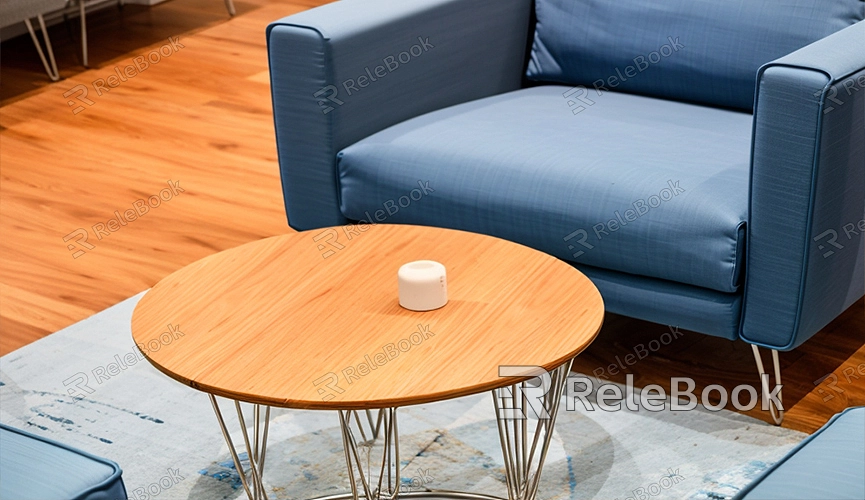How to Color 3D Models in Blender
Blender is a powerful open-source 3D modeling and rendering software widely used in animation, games, visual effects, and more. Coloring 3D models in Blender can greatly enhance their realism and visual appeal. This article will detail how to color 3D models in Blender, helping you quickly grasp this skill.
I. Preparation
Before starting to color 3D models, ensure that your Blender software is installed and configured. You can download the latest version from the Blender official website and follow the installation prompts.

1. Importing 3D Models
After opening Blender, you'll first need to import a 3D model. You can use Blender's default models or download high-quality 3D models from the internet.
1. Click on the "File" menu at the top left corner, then select "Import".
2. Choose the appropriate import option based on your model's format, such as OBJ, FBX, etc.
3. Once imported, you can view the model in the viewport window.
2. Creating Materials
Before coloring the model, create a material for it. Materials are sets of surface properties for the model, including color, reflectivity, transparency, etc.
1. Select the model and click on the materials tab (sphere icon) in the right-side properties panel.
2. Click the "New" button to create a new material.
3. In the material panel, you'll see various options like Base Color, Roughness, etc.
II. Adding Color to the Model
1. Setting the Base Color
The base color is the fundamental color of the model's surface. You can directly set the base color in the material panel.
1. In the material panel, locate the "Base Color" option.
2. Click on the color box next to Base Color and choose your desired color.
3. After selecting the color, you can see the effect in the preview window.
2. Using Textures
Apart from setting a base color, you can also use textures to color the model. Textures are 2D images that can add complex colors and details to the model's surface.
1. In the material panel, find the "Base Color" option and click on the small dot on the right side, then select "Image Texture".
2. Click the "Open" button and choose your texture file.
3. Once the texture is loaded, you can see its effect in the preview window.
3. Adjusting UV Mapping
UV mapping is the process of applying a 2D texture to a 3D model's surface. By adjusting UV mapping, you can ensure that the texture correctly fits on the model.
1. Select the model and enter edit mode (press Tab key).
2. In the top menu, select the "UV" tab, then click "Unwrap".
3. In the UV mapping window, you can see the model's UV layout. You can manually adjust these layouts to ensure the texture displays correctly on the model.
III. Applying Complex Materials
1. Using Node Editor
Blender uses the node editor to manage materials and textures. Through the node editor, you can create more complex and refined material effects.
1. In the material panel, click the "Use Nodes" button to open the node editor.
2. In the node editor, you can add and connect different nodes like shaders, textures, etc.
3. By adjusting the parameters and connections of the nodes, you can create unique material effects.
2. Adding Reflections and Highlights
Reflections and highlights can enhance the model's realism. In the node editor, you can add "Reflection" and "Specular" nodes, adjusting their parameters for the desired effect.
1. In the node editor, add a "Shader Mix" node.
2. Connect "Reflection" and "Specular" nodes to the "Shader Mix" node.
3. Adjust the blend ratio and other parameters to achieve the desired reflection and highlight effects.
IV. Rendering Settings
1. Choosing the Render Engine
Blender offers multiple render engines, including Eevee and Cycles. After adding color and textures, select the appropriate render engine for rendering.
1. In the right-side properties panel, click on the render settings option (camera icon).
2. In the "Render Engine" dropdown menu, choose your preferred render engine.
2. Adjusting Render Settings
Depending on your requirements, adjust render settings to achieve the best results.
1. Set Resolution: In the render settings panel, find the "Resolution" option and set the rendering resolution.
2. Set Sampling: In the Cycles renderer, find the "Sampling" option and set the number of render samples. Higher samples improve rendering quality but increase rendering time.
3. Starting the Render
Once settings are adjusted, you can start the render.
1. Click the "Render" option in the top menu bar, then select "Render Image".
2. Wait for the render to complete, and you can view the final result in the render window.
Through this article, you should now have a grasp of the basic steps to color 3D models in Blender. From preparation to material creation, using textures and node editor, each step is crucial. I hope these methods help you achieve better results in 3D modeling and rendering.
If you need high-quality 3D textures, HDRI, or downloadable 3D models for creating models and virtual scenes, you can download them directly from Relebook after purchasing.

